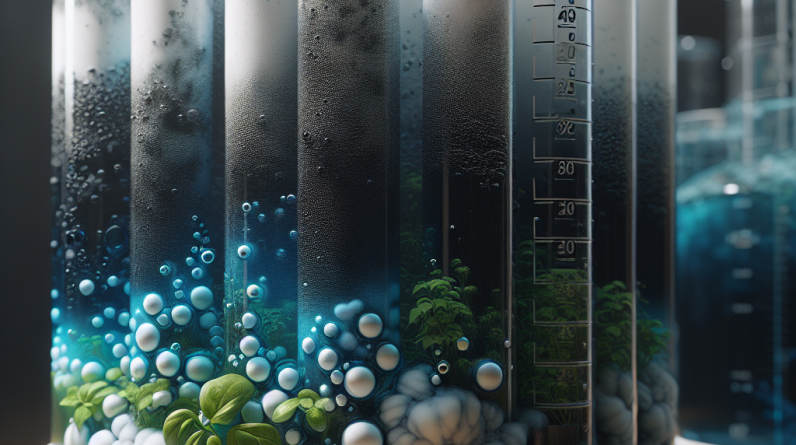
Hey there, fellow plant enthusiasts! If you’re diving into the world of hydroponics like I did not too long ago, you might be feeling a bit overwhelmed by all the nutrient solutions out there. Don’t worry, I’m here to break it down for you into manageable, bite-sized chunks. So grab a cup of coffee, and let’s go through this together!
Understanding Plant Nutritional Needs
Essential Nutrients
First up, let’s talk about what your plants actually need. There are a bunch of essential nutrients that play crucial roles in plant development. Things like nitrogen, phosphorus, and potassium are the big three. They’re like the rock stars of the nutrient world!
But it doesn’t stop there! Your plants also need secondary nutrients like calcium, magnesium, and sulfur. They might not be as flashy, but trust me—they’re super important for keeping your plants healthy.
Lastly, let’s not forget about micronutrients such as iron, manganese, and zinc. These little guys only hang around in tiny amounts, but they make a huge difference in plant health. So, knowing what your plants need is the first step in simplifying nutrient solutions.
Choosing the Right Nutrient Solution
Types of Nutrient Solutions
When it comes to choosing your nutrient solution, you’ve got a few options. Personally, I started with pre-mixed solutions because they’re super easy to use. Just mix some water with it, and you’re good to go!
If you’re feeling a bit more adventurous or have specific nutrient needs, you can try making your own nutrient solution. It’s a fun experiment and can save you some cash in the long run.
Another option is to go with organic nutrient solutions. They’re a little gentler on the environment and can enhance the flavor of your produce. If you like to keep things natural, this could be your go-to option!
pH Levels and Their Importance
Balancing pH
Okay, let’s switch gears and talk about pH levels. Trust me, keeping an eye on the acidity or alkalinity of your nutrient solution can make or break your garden’s success. Ideally, you’d want to keep the pH between 5.5 and 6.5. This is the sweet spot for most hydroponic plants.
If the pH is too low or too high, your plants can’t absorb those nutrients effectively, and you’ll end up with a sad little garden. Not fun! I learned the hard way, so try to invest in a good pH meter.
You can adjust your pH with various pH-up or pH-down solutions. Just remember to go slowly when making adjustments to avoid shocking your plants!
Feeding Schedule
Understanding Feeding Frequency
Now, let’s chat about feeding schedules. This is where it can get a bit tricky. In hydroponics, plants often need to be fed more frequently than in soil gardening. I usually start by feeding them every other watering and adjust based on how they respond.
As plants grow, their nutrient needs will change. Keep a close eye on their color and growth. If they’re looking a bit pale, it might be time to up the nutrient game!
Also, remember to give them a break! Your plants can’t just keep chugging nutrients all the time; they need some downtime for their roots to breathe.
Monitoring Plant Health
Signs of Nutrient Deficiencies
Last but not least, let’s talk about monitoring plant health. Staying in tune with what’s going on with your plants is key. If they start showing yellowing leaves or stunted growth, you might be looking at a nutrient deficiency.
Every plant has its own little quirks when it comes to symptoms, so it’s super helpful to do a bit of research on the specific plants you’re growing. Familiarizing yourself with these signs makes a world of difference.
Regularly checking in on your nutrient solution is important too. Sometimes, you might have to change it out entirely to prevent imbalances. Keeping a journal can also help track what works well and what doesn’t for future growing!
FAQs
1. What are the essential nutrients for hydroponic plants?
The essential nutrients include nitrogen, phosphorus, potassium, calcium, magnesium, sulfur, and a variety of micronutrients like iron and zinc.
2. How often should I change my nutrient solution?
It’s generally a good idea to change your nutrient solution every two weeks, but you should monitor your plants for signs of nutrient depletion as well.
3. What’s the ideal pH level for hydroponics?
The ideal pH level for most hydroponic plants is between 5.5 and 6.5. Keeping it in this range helps your plants absorb nutrients efficiently.
4. Can I use organic nutrients in hydroponics?
Absolutely! Organic nutrient solutions are viable for hydroponics and can provide a richer flavor to your produce. Just make sure to choose a suitable product for your setup.
5. How can I tell if my plants are getting enough nutrients?
Monitor for signs such as healthy, vibrant green leaves and steady growth. If you notice yellowing leaves or stunted growth, that may be a sign of nutrient deficiency.
And there you have it! Simplifying nutrient solutions for hydroponic systems isn’t as scary as it seems. Just take it one step at a time, and soon you’ll be a hydroponic pro like me!







